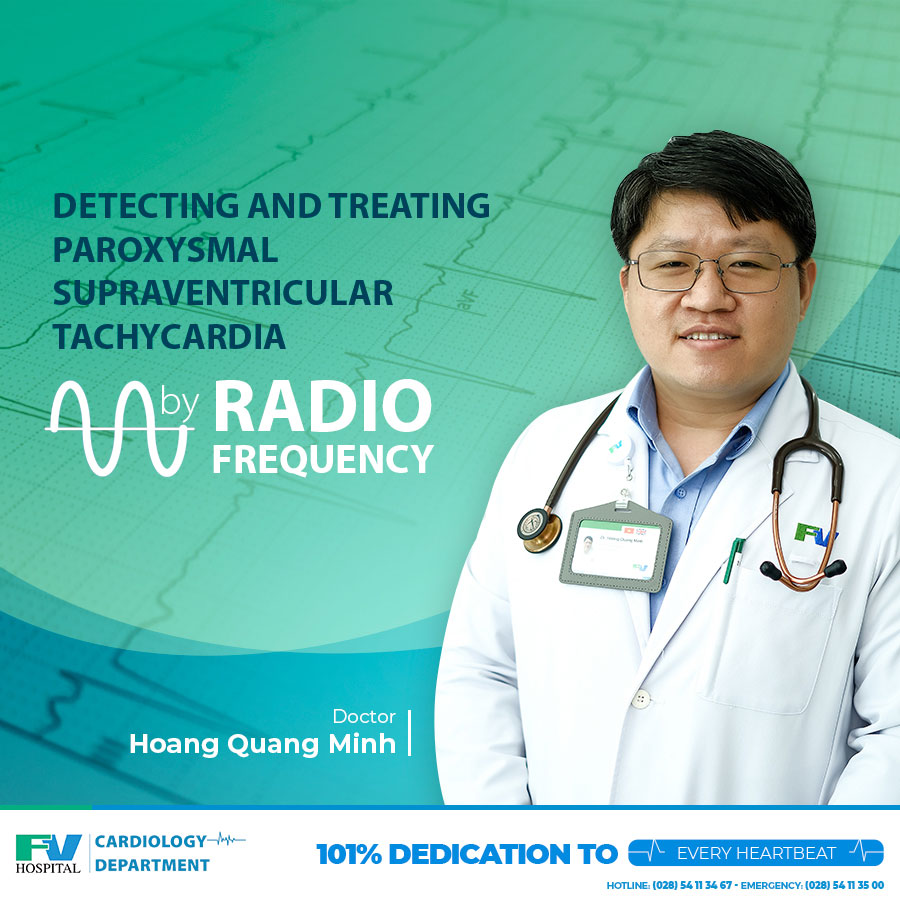Paroxysmal supraventricular tachycardia is a common cardiac arrhythmia. In a normal state, the heart beats 60 to100 beats a minute. During tachycardia, the heart rate is 140 to 250 beats per minute, or higher. When not promptly treated, tachycardia tends to occur more frequently, become more prolonged and causes persistent angina, increasing the risk of heart failure and other cardiovascular complications. Therefore, the condition should be treated as soon as possible.
People of all ages can experience paroxysmal supraventricular tachycardia, even those without heart disease. The disease is more common in women and in patients aged from 12 to 45 years old. Patients should visit their doctor if they detect symptoms such as: sudden fatigue, unexplained nervousness, palpitations or dizziness. More seriously, the patient may also experience loss of consciousness due to poor blood circulation to the brain.
Many patients with this disease live in a constant state of anxiety due to condition’s tendency to begin suddenly without warning and then stop. The disease can only be detected on an electrocardiogram (ECG) while the heart is in tachycardia. For patients with the above symptoms but who are not in tachycardia at the time of examination, the doctor will use a Holter monitor to track the patient’s heart rate for 24 hours to assist in identifying the disease.
If tachycardia occurs during this time, the Holter will record it. Regular ECG measurement increases the likelihood of detecting paroxysmal supraventricular tachycardia, and helps screen for other heart arrhythmias (such as WPW Syndrome).
Currently, radiofrequency therapy is the preferred choice for treatment as it is not invasive, takes a short time to administer, and patient does not need anaesthetic. At FV Hospital, the procedure is performed by Dr Hoang Quang Minh, a senior physician in the Department of Cardiology. Dr Minh has more than 10 years of experience in the treatment of cardiac arrhythmias via radiofrequency, ablation and pacing.
At FV Hospital, the electrosurgery procedure is performed in the Interventional Catheterisation Laboratory (Cathlab) with specialised equipment which includes digital subtraction angiography, cardiac electrophysiological probe systems and radio frequency energy generators. It takes 45 minutes to complete one physiological ablation.
To make an appointment with Dr Hoang Quang Minh, please contact:
Cardiology Department, FV Hospital: No. 6 Nguyen Luong Bang, Tan Phu Ward, District 7, HCMC
Hotline: (028) 5411 3467




